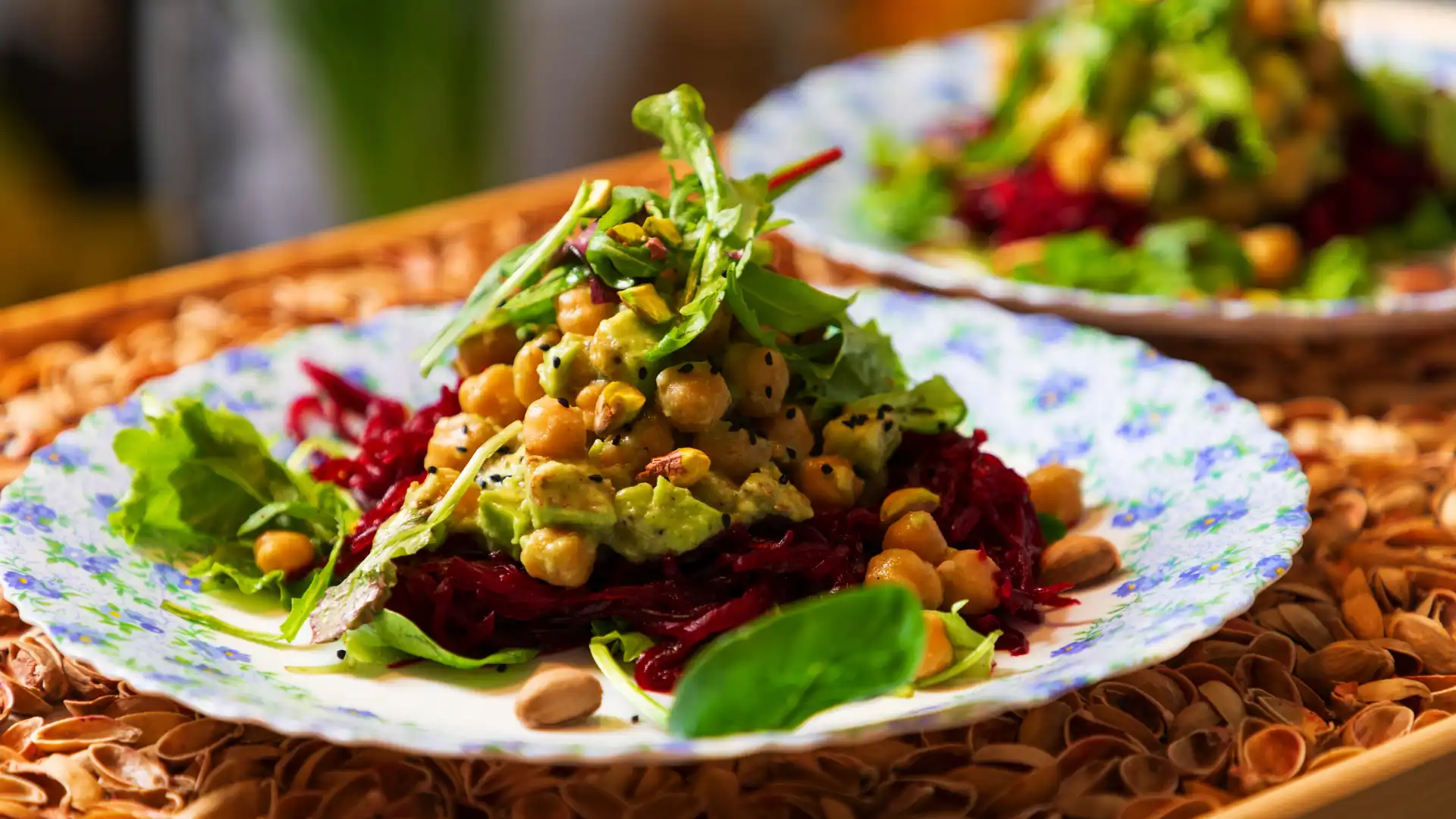Ayurvedic Eats: 7 Healthy Hacks That Won’t Sacrifice Flavor

Most of us need a little salt, fat, and sugar in our diets. Otherwise, we could throw our bodies completely off balance. Healthy cooking doesn’t mean ruling them out. Instead, we can opt for these foods in forms that have beneficial and even medicinal properties.
Here are seven simple kitchen pantry switches that will make your food a whole lot more wholesome, and tastier, too!

1. Instead of table salt, try Himalayan salt.
Unlike highly processed table salt, which is devoid of nutrients and can cause fluid retention, Himalayan salt has loads of trace minerals and regulates fluid balance in the body.
2. Instead of ground black pepper, try a pepper grinder.
Black pepper helps relieve indigestion, constipation, diarrhea, parasites, and respiratory congestion. However, black pepper that comes in already ground form doesn’t deliver. It lacks the potency of freshly ground black pepper from a pepper grinder, which explains why it’s never very pungent. Switching to a pepper grinder ensures you’ll receive all of black pepper’s healing benefits.
3. Instead of butter, try ghee.
Ghee, or clarified butter, is highly regarded in Ayurveda for its healing properties. Ghee has more medium- and short-chain fats than butter, and has been shown to reduce bad cholesterol. According to Ayurveda, ghee can nourish the body tissues and increase immunity, improve memory and intellect, stimulate the digestive fire, and improve digestion—not all of which can be said for regular ’ol butter. Because of ghee’s high smoke point, it’s a good medium for cooking. And it’s delicious spread on toast.
4. Instead of canola oil, try coconut oil.
Coconut oil is a good replacement for any cooking oil, especially canola and the ever-mysterious “vegetable” oil. Its health benefits are being touted everywhere these days, but the key is moderation. It can withstand high heat, making it excellent for cooking, and it’s a great vegan alternative to ghee.
5. Instead of plain white rice, try brown basmati rice.
Whole grains contain trace minerals, fiber, antioxidants, and healthy fats. But regular old white rice is highly processed and devoid of these nutrients. Basmati rice is a tasty and wholesome alternative. Brown basmati is recommended due to its high fiber content, but white basmati is a better choice for those with weaker digestion.
6. Instead of peanut butter, try almond butter.
While peanuts are not altogether bad, they can be problematic for some body types. Almond butter is a great alternative to peanut butter. In Ayurveda, almonds are considered to promote sattva: the quality of purity. They strengthen the body tissues and are nutritious for the brain and nervous system.
7. Instead of white sugar, try jaggery.
White sugar is processed with chemicals and bleaches, stripped of nutritional content, and is, therefore, a source of empty calories. Jaggery is a cruder, less processed form of sugar that contains calcium, phosphorus, potassium, magnesium, iron, copper, zinc, thiamin, riboflavin and niacin. From an Ayurvedic perspective, jaggery improves the digestive fire and the flow of prana (life force). It is alkaline in nature and encourages healthy bowels.
Though these alternatives have beneficial properties, they can cause just as many problems as their lesser counterparts if taken in excess. A good rule of thumb is to use everything in moderation, including the good stuff.

Reprinted with permission from TrueAyurveda.com

Julie Bernier teaches women the art of self-care so that they feel their healthiest and happiest in their own unique bodies. This holistic approach to individualized wellness is rooted in the ancient Indian knowledge of Ayurveda: a complete medical science and way of life which explains that our wellbeing blossoms when we align ourselves with nature. Julie is a Registered Ayurvedic Practitioner and Ayurvedic Yoga Therapist with the National Ayurvedic Medical Association (NAMA) as well as a Certified Massage Therapist. She studied each of these modalities in the US and straight from the source in India. Julie has been highlighted in Sakara Life, Jenni Kayne’s Rip & Tan, WMNJournal, and Vogue.



